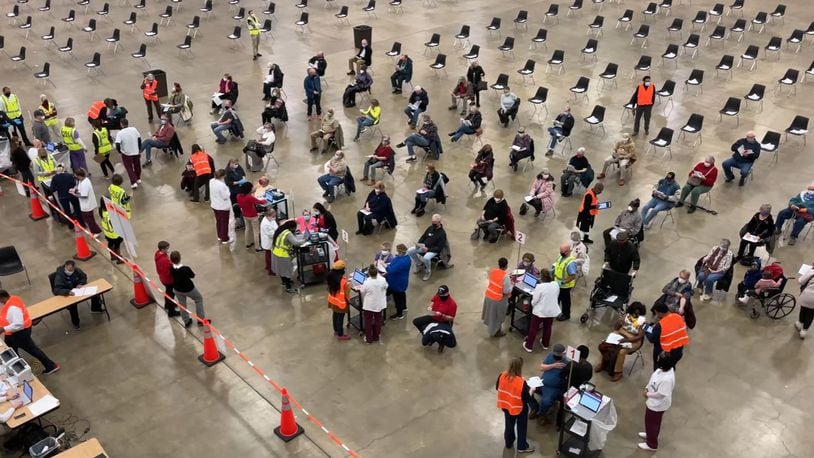“The pandemic is worse than any of the rare side effects at this point,” Weber said.
A federal recommendation to pause using the Johnson & Johnson vaccine is expected to be short, Ohio Gov. Mike DeWine said Tuesday.
“They described it on the White House call this morning as days to weeks rather than weeks to months,” he said during a news briefing.
Ohio advised vaccine providers to halt the use of the Johnson & Johnson vaccine Tuesday morning after the U.S. Food and Drug Administration and Centers for Disease Control and Prevention issued a similar recommendation due to six reports of women 18 to 48 developing a very rare and severe blood clot out of more than 6.8 million who have received the shot. The complications occurred six to 13 days after vaccination.
“I see this move today as one of great transparency of the medical process,” Ohio Department of Health Chief Medical Office Bruce Vanderhoff said. “This should be reassuring that the scientific and medical community is really on this and watching very closely to ensure that what people are receiving is in fact safe.”
The pause is also because the CDC and FDA want to give clinicians information on how to recognize and treat the possible complication.
About 35% of Ohioans, or 4.16 million people, have received at least one dose of a COVID-19 inoculation. Vaccinations are urged to protect yourself and your contacts as case countsfrom the respiratory virus increase.
Coronavirus vaccine providers in Ohio with the Johnson & Johnson are being told to hold onto the vaccines and store them until further instructions are available, DeWine said. If the temporary pause ends in the next few weeks, the vaccines will still able to be used.
More than 264,300 Johnson & Johnson vaccines have been administered in Ohio. The state had been directing the vaccine to colleges and universities and mass vaccination sites, including a regional site in Dayton. With the pause in using the Johnson & Johnson vaccine, the state is working to reorganize its vaccine distribution.
The clinic at the Dayton Convention Center will receive Pfizer vaccines to substitute for the Johnson & Johnson vaccine, DeWine said. Other regional vaccine clinics will receive the Pfizer or Moderna vaccine or will pause operations.
Wright State University also will receive the Pfizer vaccine in place of Johnson & Johnson. Miami University will pause vaccination clinics this week.
Last week Ohio started administering shots on college campuses to vaccinate students before summer break.
“Our goals was to try and get them vaccinated before they left campus,” DeWine said. “Some of them may now have to get this vaccination on their own, maybe off campus. It’s not exactly what we wanted, but we’ve accomplished a lot.”
Anyone who has received the Johnson & Johnson vaccine in the past two to three weeks should monitor themselves for headaches, changes in vision, shortness of breath, swelling or pain in their lower extremities, and consistent nausea and vomiting that doesn’t go away, said Columbus Health Commissioner Mysheika Roberts. Anyone with those symptoms should contact their health care provider.
Lt. Gov. Jon Husted, who received the Johnson & Johnson vaccine about five weeks ago, said he had no complications or side effects.
Weber said it is possible that these six cases were not related to the vaccine. Officials will also examine whether there’s a relationship between the blood clots and other conditions those women may have had.
The pause of J&J will give officials time to examine these cases. The J&J vaccine is less than 5% of vaccine doses distributed so far in the U.S.
“It makes tons of sense to just put it on hold, especially because we have other vaccines we can use,” Weber said.
